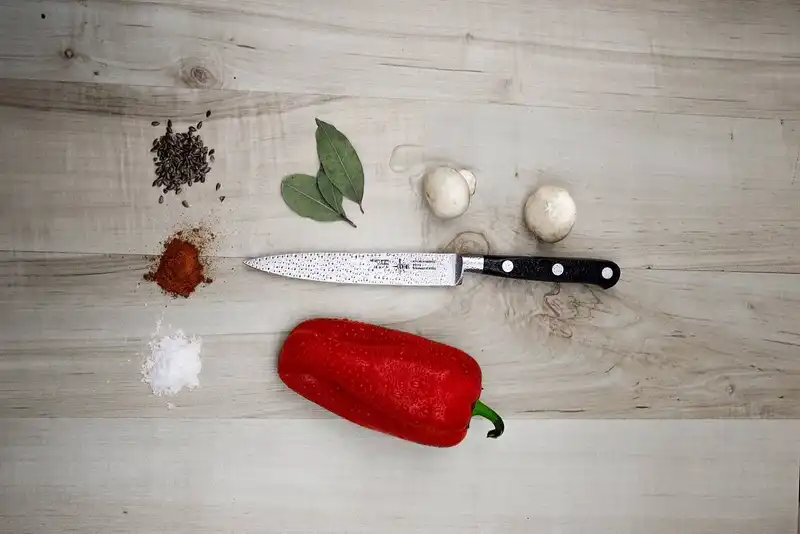Reducing Food Cost with a Cost Control Process

What is Food Cost Control?
Both restaurant owners and and their restaurant management staff should consider food cost control and labor cost control as two of their top business priorities. Food costs and labor costs are usually the highest expenses a restaurant business incurs. Improper cost control management of either food costs or labor costs can greatly harm restaurant industry success and longevity.
Food cost control aims to keep the food cost percentage as low as possible while still providing high quality menu items and great service. A restaurant business can find their food cost percentage by dividing inventory costs by food sale revenue.
Tips to help reduce food cost include-
1. Menu planning- Reduce food waste and food costs by mindfully and intelligently planning the restaurant menu. Different menu items that use the same ingredients can decrease inventory management and product purchasing costs.
Pos system data shows which menu items are the most profitable and best selling in real time which helps when deciding which items to keep on your menu. Low performing menu items can hinder cost control efforts and ultimately hurt your bottom line profitability.
Make sure to calculate food costs for each individual menu item to understand if portion control, price change, or permenant removal of the menu item is necessary.Portion control can be used to make a menu item more profitable by decreasing the food cost while keeping menu food prices fixed.
Both food prices or portion sizes can be decreased or increased for a respective menu item during the cost control process.If adjustments to portion size or food price is not remedying a food cost issue for a specific menu item then that menu item may need to be permanently removed.
2. Decrease food theft- Your restaurant pos system may assist in determining if there is a theft problem in your restaurant. A pos system will keep track of menu items ordered, comped, and replaced in real time as well as providing a record for future review.
A restaurant owner and restaurant management staff members should pay careful attention to comps and meal replacements. Frequent meal replacements can indicate that there is an issue with the kitchen staff that may require additional training or corrective action. However, excessive comps may also indicate that there is an issue with employee food theft.
3. Reduce food waste- Inventory management and portion sizes are crucial for to reduce food waste at your restaurant. Buying in bulk as a cost saving technique is useless if food is consistently thrown away every time a bulk order is placed.
Make sure if you buy in bulk that you are able to utilize all of the food products before they expire or significantly decrease in quality. A great way to do this is to ask for multiple shipments of the bulk product throughout the month instead of receiving the bulk shipment all at one time.
Portion control can also decrease food waste by limiting the amount of food that customers throw away. It is much better to serve a portion size that can be realistically consumed in one sitting to not only reduce food waste but also reduce food costs restaurant patrons incur unnecessarily.
Using a Food Cost Control Process to Reduce Food Costs

A food cost control process can reduce waste and decrease food prices for your customers. Additionally, a proper food cost control process will decrease food costs for your restaurant while increasing your bottom line profitability.
Best practices for developing and maintaining your food cost control process include-
1. Inventory management techniques- Restaurant inventory management monitors your beginning inventory and ending inventory, helping your restaurant business make money while reducing food waste. Both daily and weekly reports of your inventory can show where to cut costs and decrease labor costs spent on food products that are thrown away.
Inventory management software can automate some inventory management processes but not all of them. While a pos system may provide a relative estimate of your inventory based on sales, your pos system cannot account for food thrown away that is not recorded.
Counting inventory by product type can be time consuming but the labor cost is worth it to reduce waste and control food costs. Make money work for you, not against you, by creating and maintaining a fantastic inventory management process.
2. Check vendor prices- Establishing a relationship with your vendor can help sustain product quality and control food costs. However, it is still essential to check regularly that the prices you are being charged are the same that you originally agreed on in your vendor contract.
Every time you get a new shipment make sure your staff properly counts the received inventory and confirms both the quantity and quality of the products delivered. Then, check for any errors on the invoice. Have the restaurant owner or restaurant management staff reach out to your vendor directly about any price, quantity, or quality discrepancies.